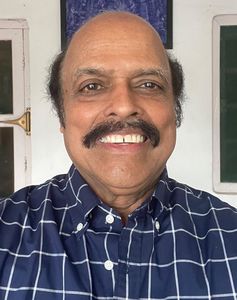THE BJP IS A divided house in Uttar Pradesh. The war within the party was out in the open earlier this month, when Deputy Chief Minister Keshav Prasad Maurya, an influential OBC leader, spoke up against Chief Minister Yogi Adityanath. His action reflected his antipathy to Yogi, whom he apparently wants deposed.
Maurya has the support of the party’s Brahmin lobby under Brajesh Pathak, the other deputy chief minister. Their common grudge against Yogi is that the chief minister does not look beyond himself and his Thakur community.
If voices against Yogi are getting louder, it could not be happening without Delhi’s blessings. But what turned the BJP’s top brass against Yogi, whom it had anointed as chief minister in 2017?
Yogi was neither Narendra Modi’s choice in the first place, nor could his success stories about “transforming” UP impress the prime minister. Union Home Minister Amit Shah had pushed Yogi’s name in 2017 simply as a compromise candidate in place of Modi’s choice, Manoj Sinha, against whom the powerful RSS leader Krishna Gopal had strong reservations. And it was widely believed that both Modi and Shah had no plans to give Yogi a long stint.
However, backed by the massive following of his ‘Nath’ congregation, Yogi reinforced himself. He played the aggressive hindutva card in which his bulldozer policy came in handy. He retained power in the 2022 assembly polls, emerging as the only chief minister in decades to get a second consecutive term in Uttar Pradesh.
Maurya believed that he had the rightful claim to the top post in 2017, as he had led the BJP to victory as state party president. But in 2022, he even lost his own seat, for which his supporters blamed Yogi. However, Maurya was made deputy chief minister again, despite Yogi’s opposition, largely because the BJP was desperate to woo the OBCs. But Maurya’s frustration rose as Yogi entrenched himself even more deeply in Lucknow. That was disturbing for Modi and Shah, too, as they were against the idea of strong chief ministers, especially in a crucial state like Uttar Pradesh.
Not that Delhi did not try to cut Yogi down to size. Modi’s blue-eyed bureaucrat from Gujarat, A.K Sharma, was made to take voluntary retirement from the IAS and was sent to Lucknow. Speculation was rife that Sharma would build a parallel power centre, but Yogi ensured that Sharma did not get anything beyond a minister’s slot in his cabinet.
Delhi’s next big move was the direct appointment of a chief secretary for Uttar Pradesh. Yet another Modi favourite, Durga Shanker Mishra, was handpicked for the job on the day of his superannuation. Initially appointed for a year, Mishra was granted a full year’s extension, which went against All India Service Rules. The idea was to keep watch on Yogi. When this move also failed to rein in the chief minister, Mishra’s service came to an end.
Realising that bureaucrats were unable to tame Yogi, Delhi entrusted the task to the political class, which began its campaign by holding him responsible for the BJP’s disappointing performance in the Lok Sabha elections. The BJP, which had bagged 62 of 80 seats in Uttar Pradesh in 2019, managed only 33 seats this time.
What started as a murmur, soon grew into a full-throated tirade against Yogi at the BJP’s state executive meeting in early July. The party’s national president J.P. Nadda flew down to Lucknow to chair the session. While care was taken to ensure that the deliberations were kept secret, the message that came out of the meeting was that all was not well within the party. Insiders confessed that a sharp divide between anti-Yogi and pro-Yogi factions was quite visible.
Maurya’s supporters spread the word that he would soon replace Yogi, who would be shunted to Delhi. But then came the anti-climax. A decision was taken at the highest level to defer any drastic step until the conclusion of the forthcoming byelections to ten assembly seats in the state. Since the BJP held only three of those seats―the Samajwadi Party had five and the BJP’s allies two―the bypolls might really not be that consequential. Yet, Yogi’s continuance may be linked with the results. Another poor show after the Lok Sabha debacle could be used by the anti-Yogi lobby to ease him out.
The opposition INDIA bloc won 43 Lok Sabha seats in UP by playing the backward and dalit card, so the BJP cannot afford to lag behind. And if the change of guard in Lucknow does not happen now, it may be too late. Surely, the saffron party would not want to risk easing Yogi out close to 2027 when Uttar Pradesh votes again.
Maurya may have his personal reasons to have Yogi out of the way. But Shah sees him as the biggest challenge in the race to succeed Modi, whenever that may happen. After all, Yogi is no less ambitious; in addition to being a hindutva icon, the mantle of being the chief minister of India’s most populous state gives him an added advantage in the succession race.
Sharat Pradhan is an independent journalist and author of Yogi Adityanath: Religion, Politics and Power―The Untold Story.



